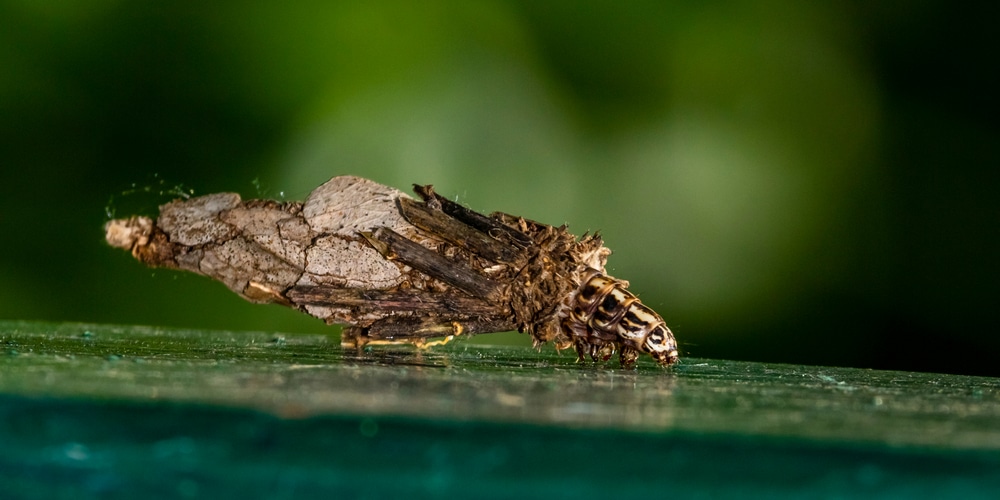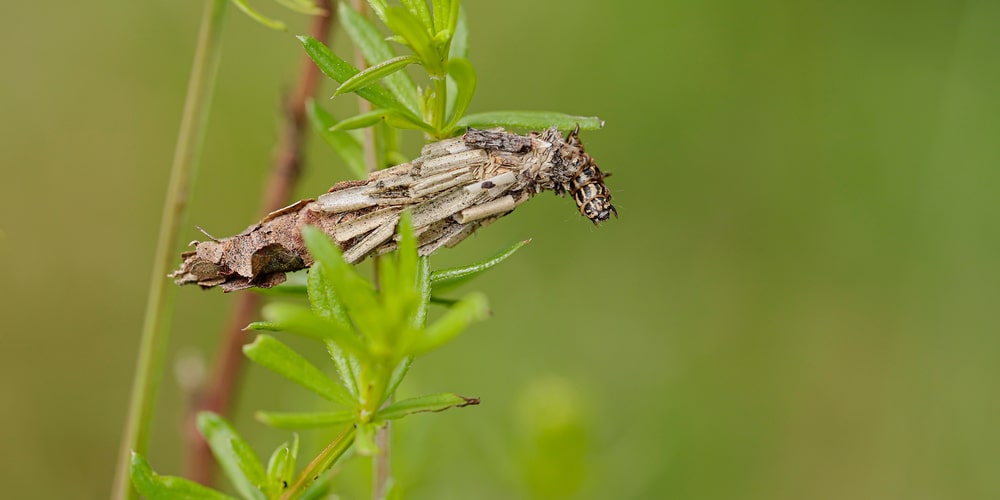You may have noticed telltale signs of bagworm infestation on your cedar tree and wonder, ‘can bagworms kill cedar trees?’
Here’s a short guide on how you can take care of bagworms affecting your cedar tree.
Can Bagworms Kill Cedar Trees?

Bagworms can certainly kill a cedar tree, especially if you don’t do anything about it. A group of bagworms can whittle down the specimen until it’s all defoliated, or loses all its leaves. A severe infestation is all it takes to kill a cedar because it will cause serious damage in a way that your tree might never recover.
It’s worth noting that evergreen bagworms are more common in conifers such as cedars than in other varieties. That said, cedar owners should be aware of these pests, which tend to come out in late spring through the summer season.
Cedars that are stressed due to not enough irrigation or are subject to poor growing conditions are more likely to get visited by pests compared to healthy specimens.
A cedar tree that has lost more than half its foliage or leaves isn’t likely to survive a bagworm attack. However, there’s still a chance if you’re willing to wait several years for your evergreen to regrow its leaves and branches. You can prune out the defoliated branches using a saw or similar equipment and feed with a balanced fertilizer to encourage the tree to grow.
Two Ways to Remove Bagworms on Cedar Trees
Apply an Insecticidal Spray
Getting rid of bagworms in cedar trees can be as simple as spraying them with an insecticidal solution. However, you should know that there’s a specific window of opportunity or a timeline on when to best spray evergreens to kill bagworms.
In most states, this is from late spring to early summer, or when the bagworm eggs have hatched and the larvae are vulnerable.
It’s worth noting that you should get an insecticidal spray that’s meant to kill bagworms. Recommendations include products that have pyrethrins, acephate, malathion, and spinosad as the active ingredient. For a more organic approach, you can get BT, or Bacillus thuringiensis from reputable garden centers and home improvement shops.
You may need to spray the insecticide a few times in order to get the desired effect. Always follow instructions on the label and wear protective clothing and eye gear so you won’t experience adverse effects.
Hand Pick and Drop in Soapy Water
Aside from chemical control via sprays, you should routinely inspect your cedar trees for signs of a bagworm infestation. The best time would be during the spring season and as the insects are starting to produce eggs.
Small bagworm infestations can be easily controlled with the hand-pick method. However, one thing you should know is that dropping the bags on the ground won’t remove the pests, as the eggs can still hatch and get back on the cedar tree. You can put the insects in a bag and dispose of the bag immediately, or in a bucket of soapy water to kill them.
It’s recommended that you check for bagworm pests and remove them by hand at least once a week until all of them are gone. You can supplement with an insecticidal spray to kill larvae that are hiding deep inside the tree. With persistence and a bit of luck, you’ll have eradicated the bagworms that are affecting your cedar tree.
